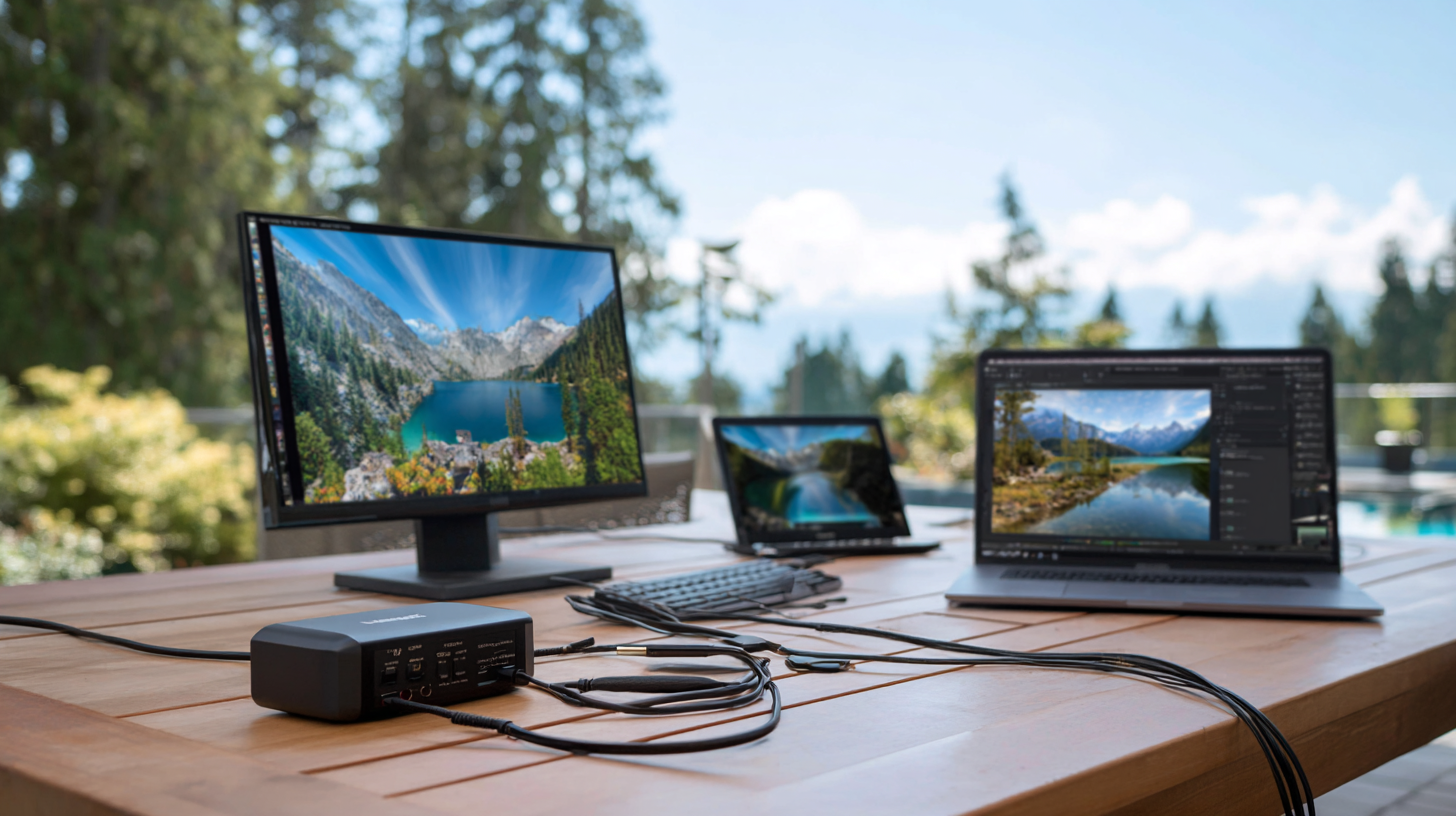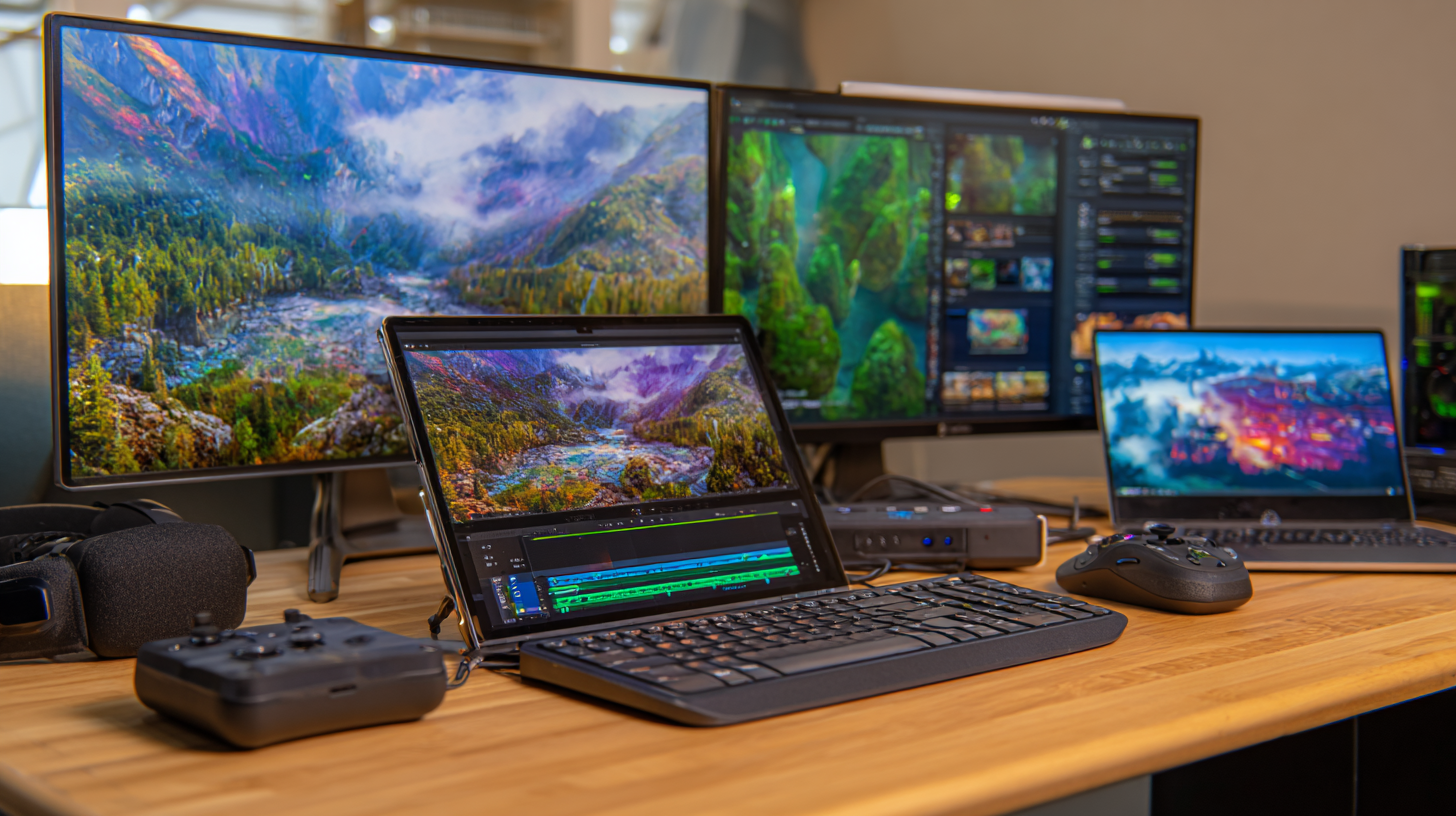Leave Your Message
As we look toward 2025, the landscape of technology continues to evolve, and the demand for innovative solutions such as the HDMI Portable Monitor is skyrocketing. According to recent market research reports, the portable monitor segment is expected to witness a compound annual growth rate (CAGR) of over 15% from 2023 to 2028, driven by the rise in remote working, gaming, and mobile computing. The versatility of HDMI Portable Monitors enables seamless connectivity with various devices, catering to a diverse range of global buyers seeking flexibility and mobility in their digital experiences. The growing emphasis on productivity and entertainment on-the-go further solidifies the essential role of these monitors in modern settings. As we explore the industry's trends and advancements, it is clear that the HDMI Portable Monitor is set to be a key player in the future of digital innovation, offering unparalleled adaptability and performance.

The evolution of technology has ushered in a new era, and portable monitors are at the forefront of this digital innovation. These sleek, lightweight devices have transformed the way we work, play, and interact with our digital content. With increased mobility, users can enhance their productivity by extending their screens without being tethered to a conventional desktop setup. The rise of portable monitors is a game-changer, especially for remote workers, students, and digital nomads who need flexibility and efficiency in their daily tasks.

As globalization continues to intertwine with technology, the demand for versatile gadgets has surged. The best HDMI portable monitors offer exceptional display quality, connectivity options, and ease of use that cater to diverse needs. Whether it's for business presentations, gaming on the go, or simply multitasking more effectively, these monitors deliver a seamless experience. With their compact design and high-definition performance, they enable users to bring their workspace anywhere, breaking down the barriers of traditional computing and paving the way for a more connected and productive world.
When selecting the best HDMI portable monitor, buyers should consider several key features that enhance both functionality and user experience. First, display quality is paramount; a monitor with full HD (1920x1080) resolution ensures crisp and vibrant visuals, making it ideal for presentations, gaming, or streaming media. Additionally, the screen size and aspect ratio should complement the intended use—smaller screens are great for travel, while larger ones offer a more immersive experience.
Another crucial element is connectivity options. A versatile HDMI portable monitor should offer multiple input ports, such as HDMI, USB-C, and even Mini DisplayPort, to accommodate a variety of devices, including laptops, smartphones, and gaming consoles. Furthermore, power efficiency is essential; a monitor with a built-in battery or low power consumption allows for extended use without being tethered to a power source. User-friendly features like adjustable stands and protective cases can also enhance portability, making it easier to use in diverse environments.
In today's fast-paced digital world, the need for portability and versatility in display technology is more crucial than ever.
HDMI portable monitors have emerged as essential tools for global buyers who seek convenience without sacrificing performance.
These monitors provide a perfect solution for professionals, gamers, and content creators on the move, allowing them to connect to various devices seamlessly.
With the rise of remote work and online content consumption, having an external display can significantly enhance productivity and viewing experience.
When evaluating top HDMI portable monitors, several factors come into play, including display quality, size, weight, and connectivity options.
Monitors like the ASUS ZenScreen and AOC I1601FWUX stand out for their perfect blend of sleek design and impressive specifications.
They offer full HD resolution, lightweight construction, and hassle-free USB-C connectivity, catering to diverse needs across different industries.
A comparative analysis reveals that while some models excel in portability, others prioritize resolution and refresh rates, making it crucial for buyers to assess their specific requirements before making a purchase.

The demand for portable monitors has surged as professionals and students seek flexible solutions to enhance productivity in increasingly mobile work environments. Recent reports indicate that portable external monitors not only facilitate multitasking but also significantly improve user engagement through larger, high-quality displays. For instance, a study found that using a second screen can boost productivity by up to 20-30%, allowing for smoother transitions between tasks and applications, which is particularly beneficial for remote workers or frequent travelers.
In contemporary work settings, portable monitors are invaluable tools that cater to various use cases. From facilitating video conferencing to providing additional screen space for creative tasks, these devices ultimately contribute to a more efficient workflow. With an array of connectivity options available, including USB-C and HDMI, users can easily connect these monitors to their laptops or tablets. Moreover, the lightweight and compact designs available today ensure that professionals can carry their workstation with them, enhancing their ability to work effectively from virtually anywhere. As businesses continue to adapt to flexible work arrangements, the demand for such innovative technologies will likely keep rising, cementing their role as essential productivity tools.
The rapid evolution of technology has led to significant advancements in HDMI portable monitors, making them a vital tool for modern consumers. As digital landscapes expand, these monitors are becoming more versatile, catering to various needs ranging from gamers seeking immersive experiences to professionals requiring high-definition displays for presentations. The integration of advanced technologies such as OLED panels and higher refresh rates enhances their appeal, while improved battery life ensures portability without sacrificing performance.
Looking ahead, we can expect HDMI portable monitors to further embrace trends in connectivity and user-friendliness. The rise of wireless technology and smart features, including touch functionality and built-in apps, will likely redefine the user experience. Additionally, as remote work continues to gain traction, the demand for lightweight and multifunctional monitors will surge, prompting manufacturers to innovate and meet diverse consumer requirements. This shift not only reflects the changing nature of work and leisure but also underscores the essential role of portable monitors in creating seamless digital environments.
| Model | Size (inches) | Resolution | Aspect Ratio | Weight (lbs) | Battery Life (hours) |
|---|---|---|---|---|---|
| Portable Monitor A | 15.6 | 1920 x 1080 | 16:9 | 2.8 | 5 |
| Portable Monitor B | 14.1 | 2560 x 1600 | 16:10 | 2.5 | 4 |
| Portable Monitor C | 17.3 | 1920 x 1080 | 16:9 | 3.5 | 6 |
| Portable Monitor D | 13.3 | 1920 x 1080 | 16:9 | 2.3 | 5 |
